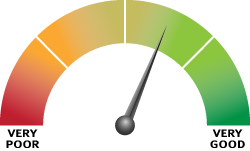
Direct use pressure on the Great Barrier Reef
You are viewing an archived copy of the 2017 report.
Key finding
At a reef-wide scale, direct use of the region is a significant economic contributor and its impact on the region’s ecosystem is projected to increase with population growth.
Great Barrier Reef marine park area (information applies statewide, map locations are for reference only)
The Great Barrier Reef continues to bring social and economic benefit to regional and national communities through direct use of reef resources. The future value of these varied uses depends on a healthy, intact ecosystem.
Fishing continues to negatively affect the reef in a number of ways, such as through the effects of discarded catch, incidental catch of species of conservation concern, overfishing and illegal fishing.
Increasing port activities directly affects local areas and uncertainty remains around ecosystem effects of dredging and the disposal and re-suspension of dredge material.
Increasing regional populations and economic development will likely increase direct use and therefore the potential for impacts to both the region’s ecosystem and its heritage values.
More information:
Indicator: Direct Use
Direct use pressure on the Great Barrier Reef Marine Park Area as reported in the Great Barrier Reef Outlook Report 2014.

See also: Estuarine and marine ecosystems assessment summary.
- Previous Coastal development pressure on the Great Barrier Reef
- Next Land-based run-off pressure on the Great Barrier Reef

